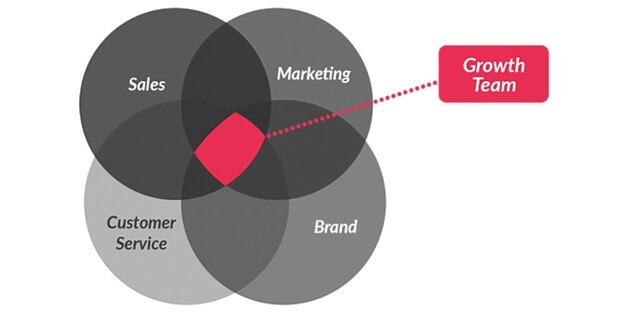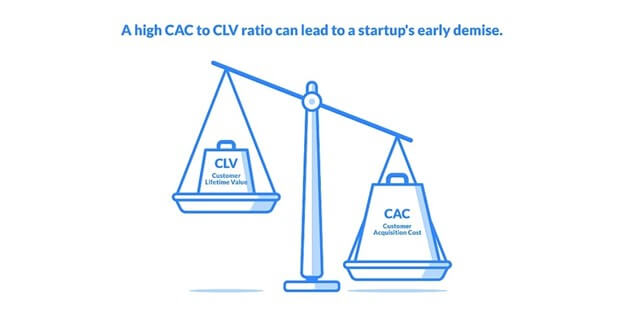If you’re reading this, I’m sure I don’t need to tell you why measuring your business growth is important. One way to make sure if your business is sustainable and profitable in the long run is by figuring out the rate of business growth.
In fact, it isn’t hard to calculate either. Here’s how it’s done:
Yearly Growth Rate = {[(Revenue in 2nd Year) – (Revenue in 1st Year)]/(Revenue in 1st Year)}* 100%
People often ask “How much business growth percentage is good?” Well, you can’t put a number on it mainly because it varies from industry to industry, even phase to phase. But here’s a more important question – What if your business growth ceases?
Let’s say you’re running your business for the last 10 years. Suddenly you hit a ceiling and your business growth rate isn’t increasing. How does that happen? Well, that’s exactly what we’re going to discuss next.
Why did My Business Growth Hit a Wall?
Departmental Barriers
Before underestimating what this point is about to entail, hear me out – Let’s say you generate leads from email marketing which are passed on to the sales team so that they can reach out to those leads, yet you aren’t seeing any significant success.
Now, had there been a dialogue between the sales team and the email marketing team where the sales team were to express some big pain points of your clients, your email marketing team could incorporate those as your business solutions in those emails, which, believe it or not, would significantly improve your business growth.
 Even Facebook created a “growth team” (see above image) that consisted of various professionals across all departments and seniority levels. Their job was to bring their share of feedback to understand the end consumer better so that they all have more factors to keep in mind before making any decisions.
Even Facebook created a “growth team” (see above image) that consisted of various professionals across all departments and seniority levels. Their job was to bring their share of feedback to understand the end consumer better so that they all have more factors to keep in mind before making any decisions.
Not Knowing Your Numbers
Another underestimated factor, especially for medium and large scale companies is not knowing their numbers. Initially, we talked about how to calculate your yearly business growth rate, but there are others that are way more important to track from time to time.
Apart from the business growth rate, two of the most important metrics I’ve come across are CAC (Customer Acquisition Cost) and CLV (Customer Lifetime Value).
CAC is the cost of acquiring a customer. It’s calculated as the total cost of sales and marketing divided by the number of customers acquired during that period.
CLV is the total amount of money your consumer is going to spend during their relationship with your company. There’s a detailed formula to calculate CLV, but more importantly, there’s an inverse relationship between CAC and CLV.
 A CLV: CAC ratio of 1:1 means that the consumer ended up paying the same amount you invested to get them, which means you didn’t earn any profit. The higher the CLV: CAC ratio, the better the business growth it projects.
A CLV: CAC ratio of 1:1 means that the consumer ended up paying the same amount you invested to get them, which means you didn’t earn any profit. The higher the CLV: CAC ratio, the better the business growth it projects.
Regardless of how complex they may seem initially, knowing these values will give you a nuanced picture of your business growth. Competitor analysis will also help you understand whether your business is sustainable or not.
Overdoing Limited Period Marketing Campaigns
 Personally, I believe that limited-time offers bring out the best marketing strategies. It taps into the human psyche because it creates scarcity, which means something good is out there, and it’s going to go away. People do that during festive seasons, especially through PPC advertising.
Personally, I believe that limited-time offers bring out the best marketing strategies. It taps into the human psyche because it creates scarcity, which means something good is out there, and it’s going to go away. People do that during festive seasons, especially through PPC advertising.
However, imagine getting designers and writers to work on creating multiple campaigns that can only last for a limited period of time. A lot of companies do this and it’s just not sustainable over time, and by the way, you’re only as good as your last offer—which may or may not work either.
Allocating most of your Marketing team’s time on evergreen campaigns is not only recommended but is more like a prerequisite for business growth.
Lack of Automation
Imagine if every single task that your teams perform is carried out manually. How inefficient would that be? Apparently, that is a case with several businesses and it can eventually hamper your business growth.
People don’t realize but the following tasks can easily be automated:
- Data migration from one platform to another.
- Report creation, which is just a copy-and-paste process.
- Task scheduling and reminders.
A resource that will always be scarce is time. Spending it on monotonous tasks is boring as hell and could’ve been easily invested in performing creative and strategic business operations.
Allow your employees to invest time in researching about software that automate the monotonous functions. Learning these software will help your company save so much time that you can use that time to experience more business growth.
For example, your sales team can use HubSpot instead of Excel sheets to manage your leads, create tasks to follow up, send automated emails and so much more. Similarly, there are tons of email marketing tools to export contacts from various sources and send them bulk emails.
Too Much Focus on the Initial Stages of Marketing Funnel
It makes sense to try to get new customers for your business, but business owners often forget about the customers that you already have, and end up under-capitalizing on that. After all, it has been observed that your loyal customers will spend 67% more than your new customers.
 By focusing on the bottom of the funnel (as shown in the above image), you can generate more income without having to allocate an extra advertising budget. Since that increases your Customer Lifetime Value, you now have more money to get new customers, and hence, better business growth.
By focusing on the bottom of the funnel (as shown in the above image), you can generate more income without having to allocate an extra advertising budget. Since that increases your Customer Lifetime Value, you now have more money to get new customers, and hence, better business growth.
Wrapping Up
As your business grows to a point that the cost per conversion seems to become nominal, you are in the big league. Now you can try and incorporate various marketing strategies such as:
- Creating customized campaigns and split testing.
- Prioritizing your advertisement expenditure based on profitability.
- Segregate your leads and create an automated nurture sequence.
- Working on growing your business organically.
Hopefully, you get the gist of these strategies that will help you improve your business growth. When the business is successful – the possibilities are endless.
Devansh Khetrapal is an avid content curator who loves writing about things that are mainly associated with Business and Technology. He writes about Digital Marketing, Advertising, Public Relations, and Organic Business Growth strategies. He’s currently working with RnF Technologies and has contributed thousands of write-ups for its clients.
Business growth stock photo by Rawpixel.com/Shutterstock







